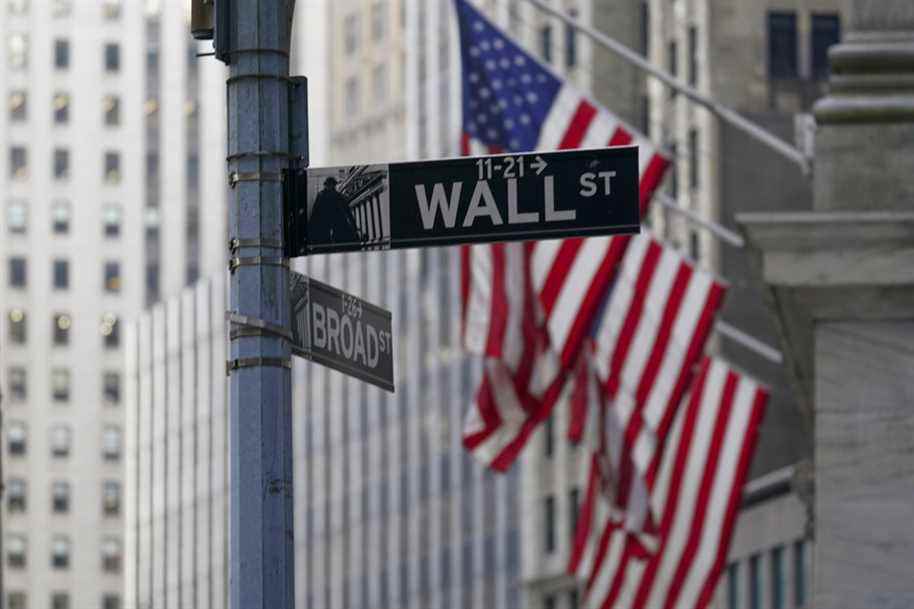(New York) The New York Stock Exchange accused Friday another week in the red, ending with a severe loss, worried about the aggressive attitude of the Fed vis-à-vis inflation which could slow the economy.
Updated yesterday at 5:51 p.m.
According to final results, the Dow Jones index fell 2.82% to 33,811.40 points, registering its worst session of the month. The tech-heavy NASDAQ lost 2.55% to 12,839.29 points and the S&P 500 dropped 2.77% to 4,271.80 points.
Prices continued to react to more hawkish remarks by Jerome Powell, President of the American Central Bank (Fed), regarding inflation. The central banker said Thursday that a hike in key interest rates of half a percentage point “was on the table” for the next monetary meeting in early May.
“Bad day today! summed up Peter Cardillo of Spartan Capital. “Obviously, the markets fear that rates will rise again after what Jerome Powell said: the descent began on Thursday and accelerated on Friday,” said the analyst.
Friday marked the fourth consecutive negative week for the index of star stocks and the third in a row for the NASDAQ and the S&P 500. The thirty values of the Dow Jones were all in the red.
National Securities’ Art Hogan discerned “a lot of anxiety about the aggressiveness of the Fed.” “The market is spooked by how quickly the 10-year bond yield has risen,” Hogan added.
Yields on 10-year Treasury bills held steady at 2.89%, after hovering around 3% overnight (2.96%).
Jamie Cox of Harris Financial Group went further: “Markets are feeling a huge sense of unease about the growing likelihood of policy error by the Federal Reserve.”
Madness
“When a Fed official suggests a 50 basis point hike, markets immediately start trying to price in 75 basis point hikes,” the analyst translated. “It really is madness. Most investors would do well to ignore these anticipations […] waiting to see what really happens with the rates”.
Some remained optimistic for the following week when an impressive salvo of corporate results is on the program with Microsoft, Apple and Google (Alphabet) in particular.
“The market will focus again on the results and maybe they will reverse the negative sentiment caused by the aggressiveness of the Fed”, suggested Peter Cardillo.
All eleven S&P sectors ended lower, led by materials (-3.73%) followed by health services, communications and banks. The energy sector fell more than 2.40% in the wake of a drop in crude prices, weighed down by the confinements in China linked to COVID-19.
The big names in tech, a growth stock par excellence that are very sensitive to interest rates, looked gray like Apple (-2.78%), Facebook (Meta, -2.11%) or Google (- 4.26%). Netflix, terribly battered this week after a decline in its subscribers, again dropped 1.24% to 215.52 dollars.
American Express fell 2.75% to $180.64 despite better than expected results in the first quarter of 2022, benefiting from higher spending on travel and leisure thanks to the recovery of activity in many countries.
The Gap clothing brand plunged almost 18% to $11.72 as its quarterly earnings forecast was lowered and the director of its subsidiary Old Navy announced her departure.
Snap, parent company of the social network Snapchat, rose 1.16% to 20.76 dollars. While the social network’s advertising sales fell in the first quarter as the war in Ukraine discouraged investor spending, the group said the number of users of the service, which is very popular among young people, rose by 18. % to 332 million.
Twitter recovered by 3.93% to 48.93 dollars after a week rich in new episodes around Elon Musk’s desire to buy the social network. The Tesla boss seems determined to get his hands on the microblogging network while Twitter’s board has adopted a “poison pill” to dissuade him.
Rare solidly positive trajectory, the action of the American group of hygiene products Kimberly-Clark jumped 8.13% to 138.51 dollars after announcing a good quarterly result coupled with higher forecasts for sales for the year .
The Toronto Stock Exchange also ends lower
The Toronto Stock Exchange closed lower on Friday. The more dynamic tone of the central banks of Canada and the United States caused the North American stock markets to fall for a second consecutive day, their worst decline in nearly two years.
The Toronto floor’s S&P/TSX Composite Index lost 464.03 points, or 2.1%, to end the session with 21,186.38 points.
The Toronto market lost 4.9% in two days, the biggest drop since June 2020.
The sector that includes mining, fertilizers and forest products fell 2.6% due to lower metal prices. First Quantum Minerals lost 9.1%.
The gold contract fell US$13.90 to US$1,934.30 an ounce and the copper contract fell 12.3 cents to US$4.58 a pound.
The tech continued its downward trend, tumbling 2.5%, with shares of Hut 8 Mining down 4.4% and Shopify losing another 3.2%.
Energy fell 1.9%, with Crescent Point Energy losing 4.9% on lower crude oil and natural gas prices.
In the currency market, the Canadian dollar traded at an average rate of 78.73 US cents, down from 79.81 US cents the previous day.
With The Canadian Press
